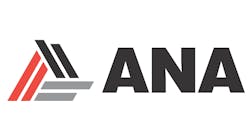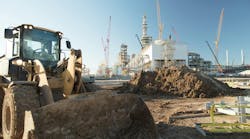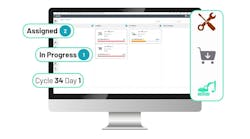Rental Market Jumps 10.9 Percent in First Quarter, Say Baird/RER Survey Respondents
The overall rental market remained healthy but with slowing growth in the first quarter of 2023 according to the quarterly Baird/RER rental equipment survey. Revenue rose 10.9 percent compared to a 9.7-percent year-over-year hike in the latest quarter but still down from the 12-to-15 percent from the four previous quarters. Expectations are for 10.4 percent growth in the second quarter and 10.2 percent in 2023, up from 8.5 percent in the prior survey. Current growth rates remain healthy while commentary was mixed, with commentary regarding demand trends and the operating environment for the second half of 2023 and beyond remaining somewhat cautious.
A net 33 percent of respondents saw revenue and utilization above initial budget in the first quarter, while 37 percent said that regarding the fourth quarter. Rental rates were up 3.7 percent year over year, which was lower than the previous four quarterly surveys. Multiple headwinds continue to impact demand growth and profitability, including labor shortages/wage inflation and elongated new equipment lead times.
Concern about regional bank financing risk has become an issue in the first quarter. Survey responses indicated expectations for modest, if any, impact on respondents’ business in case regional banks tighten lending.
Second quarter rental revenue is expected to rise 10.4 percent year over year. 2023 revenue is expected to be up 10.2 percent.
Average rental revenue increased 10.9 percent, up from last quarter’s 9.7-percent growth, marking the first quarter of accelerating growth after three straight quarters of deceleration. Commentary was mixed. The quarter was in lie with expectations for 59 percent of respondents, with about 38 percent seeing better than expected results and only 4 percent reporting worse-than-expected results. Still the net 33 percent positive was down slighting from the previous survey.
“Market remains strong, we are seeing a huge increase in road projects,” said one respondent.
“Construction is down, but events are up vs. 2022,” said another.
“Our local market has remained consistent because of all the infrastructure and new building construction,” said one.
“Utilization and revenues for us are at all-time highs in the first quarter,” said another. “New fleet is going on rent as soon as it becomes available.”
The average rental rates were up 3.7 percent year over year, a lower growth than the preceding prior four quarters (+3.8-4.8%). Solid rental demand and tight supply continues to provide pricing flexibility.
Rates growth are expected to be relatively steady (a slight dip from the fourth quarter expectation) in 2023. Rental rates are expected to increase 4.2 percent in 2023 (slightly lower than the forecast from the prior survey (+4.4%).
Selected comments:
• Rates are leveling off, competition is now receiving long awaited new equipment for rental fleets, causing a surge in used equipment on market which is going to drive down rates and FMV.
• We are still seeing a favorable rate market as well as consolidation within the industry.
• There is greater competition cropping up. However, we do not see this as anything but positive. Rising tides raise all ships. Competitors actually have a positive impact on our revenues.
• Rental rate increases are not rising enough to match the new costs.
New Access Equipment availability and lead times appear mostly stable: 36 percent of respondents (revenue weighted) report Access Equipment availability has stayed the same the past several months with a net 33 percent reporting availability has gotten worse, 31 percent reporting better. On an equal-weighted basis, 22 percent of respondents reported worse conditions, significantly better than the prior three quarters.
New Earthmoving Equipment availability and lead times improving: 64 percent of respondents (revenue weighted) report Earthmoving Equipment availability has stayed the past several months with a net 17 percent reporting availability has gotten better, 20 percent worse. On an equal-weighted basis, 26 percent of respondents reported worse conditions, improved from last quarter and much better than the prior three quarters.








